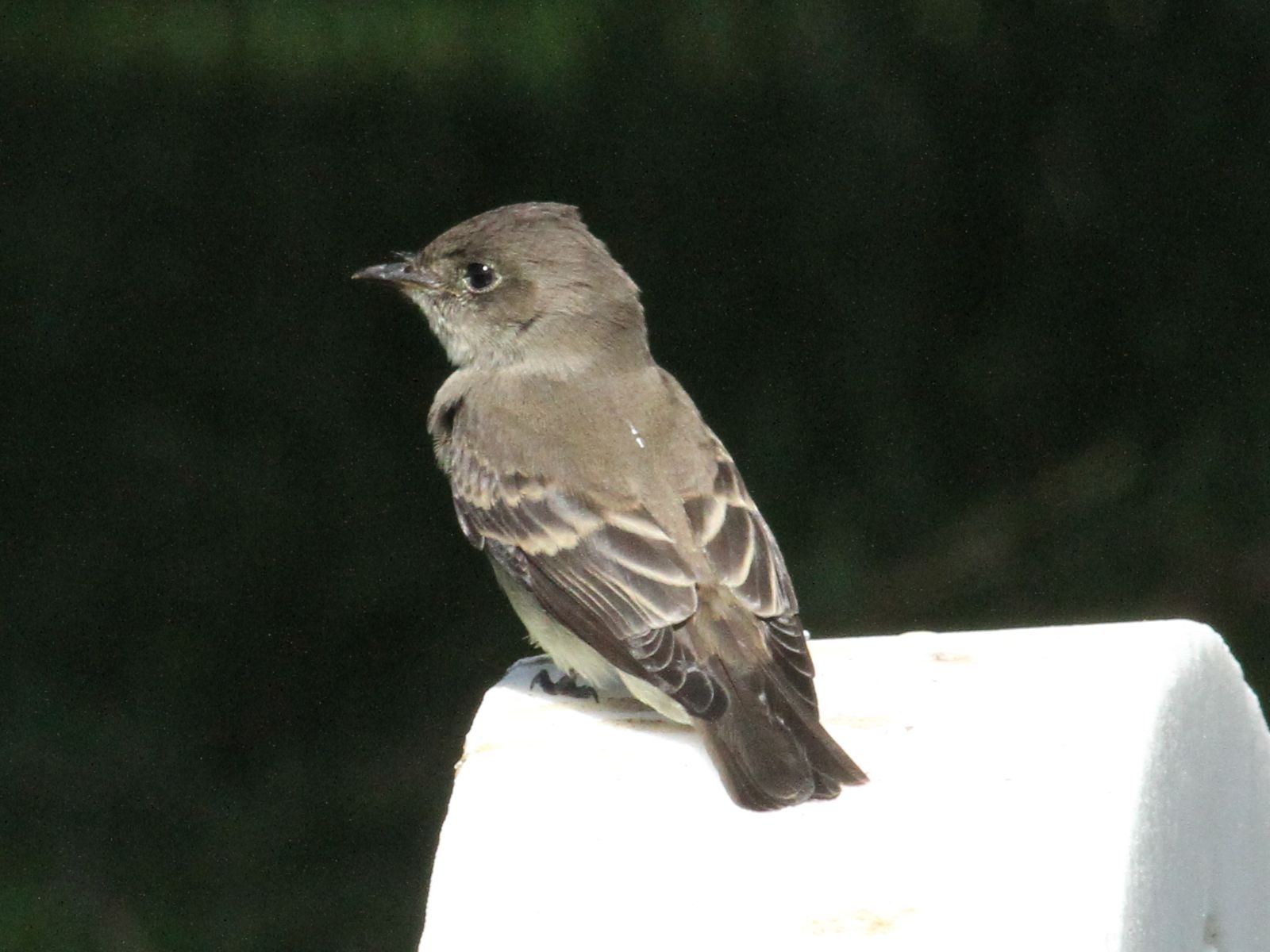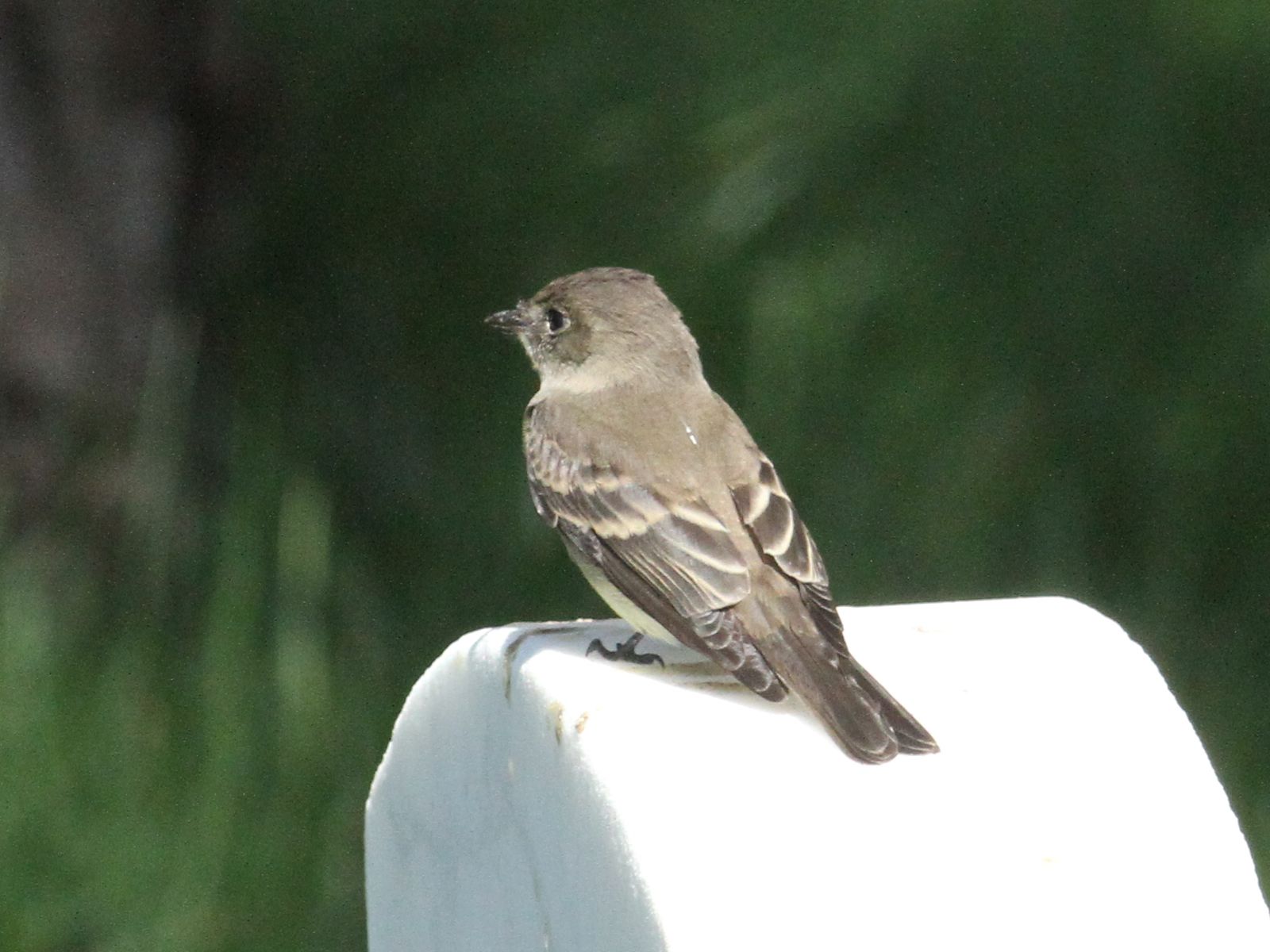[All photographs copyright, Gary Nunn 2012] – A lot of discussion was generated recently about a flycatcher found in the southeast corner of Fort Rosecrans National Cemetery. I initially ran into this bird while it was in a stationary mode sitting around on a grave marker. It seemed a bit odd looking, sort of “legless” and inanimate perched on its belly on the grave marker, and was quite gentle looking and round headed. It almost looked like a big martin – perhaps a giveaway right there! As soon as it took flight however there was no mistaking the barrel-roll aerial acrobatics and large cloak like wings of a Wood-Pewee. This bird flew like a martin but in tight circles and with such swift turns you could not keep up with it visually. Later on I deleted all the photographs that I took not realizing they might be useful! Luckily I was back there the next day and took a few more photographs of it sitting on a grave marker which are shown below.
Even viewed from the back, foreshortened in perspective, this bird has a very long primary projection extending a good one-third of the way down the tail. It is a big tail too, wide all the way down its length and quite well notched. Perhaps a bit difficult to discern it does actually have three wing bars. The lesser secondary coverts, mostly hidden by the fluffy scapular feathers, are pale-tipped in addition to the more noticeable other two large wing bars on the median and greater secondary coverts.
One of the nice things about watching many different bird species sitting on grave markers at Fort Rosecrans National Cemetery is that you have available a standard size marker to compare against the bird! The Standard Government Upright Headstone is 42 inches long, 13 inches wide, and 4 inches in thickness. So if you can get a bird close to it then you kind of have a ruler sitting right there on the photograph!
The flight shot below of the Wood-Pewee captures the bird leaving the Upright Headstone, the headstone it flew from is below the bird. The bird is literally right on the headstone in flight since it is in the narrow depth of focus of the effective 640 mm focal length of my lens. Note the enormous cloak like wings that are just really long when outstretched.
The photograph below is darkened to show better the thickness of the Headstone Marker. To compare the bird versus the 4 inch thick Headstone Marker I simply measured a V from the middle of the bird’s back to each wing tip and scaled that total measurement against the thickness of the Headstone Marker below that it flew from. My estimate came out about a 10 inch or bit larger wingspan of this bird. Try it – it works!
The following wingspans come from Cornell Laboratory of Ornithology online species accounts; Western Wood-Pewee 10.2 inches, Eastern Wood-Pewee 9.1-10.2 inches, Least Flycatcher 7.9 inches, and Hammond’s Flycatcher 8.7 inches. It would seem to fit best in the Wood-Pewee range.
The mostly dark lower mandible indicates this is very likely a juvenile Western Wood-Pewee and not an Eastern Wood-Pewee which ought to show more light coloration. I think a bit of yellow-orange color can be seen also at the bill gape, it looks a bit swollen like a juvenile bird. Juvenile Western Wood-Pewees complete their first prebasic molt on the wintering grounds so we ought to see a few coming through the area at this date. I never heard it vocalize but think it is reasonable to assume it is the more common of the two possible species here in Southern California.





Looking forward to reading through more. Great article post.Thanks Again. Wonderful.